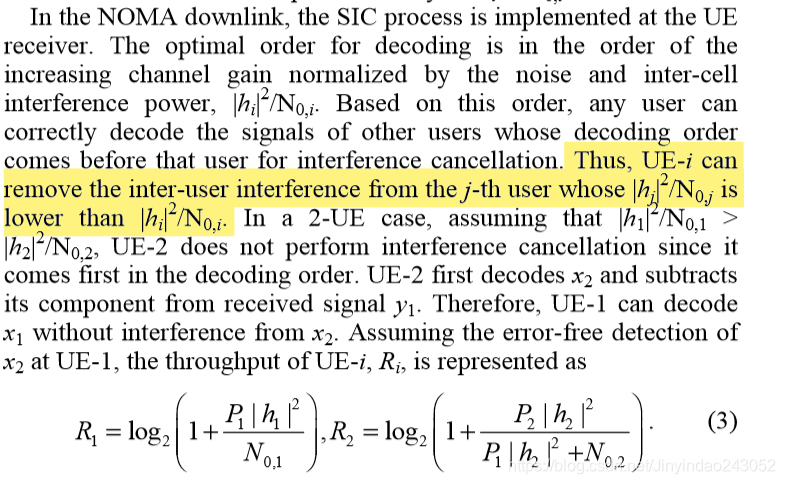更多关于NOMA的论文解读请见本人无线通信专栏的NOMA系列
论文名
Non-Orthogonal Multiple Access (NOMA) for Cellular Future Radio Access
链接
以下是提取的一些重点
技术特点
NOMA superposes multiple users in the power domain although its basic signal waveform could be based on the orthogonal frequency division multiple access (OFDMA) or the discrete Fourier transform (DFT)-spread OFDM the same as LTE baseline.
SIC接收机
NOMA adopts a successive interference cancellation (SIC) receiver as the baseline receiver scheme for robust multiple access.
配套技术
To make NOMA promising, it should be used with advanced transmission/reception techniques such as dirty paper coding (DPC) or a SIC receiver
数学原理



性能影响因素:
power allocation for each UE greatly affects the user throughput performance and thus the modulation and coding scheme (MCS) used for data transmission of each UE
By adjusting the power allocation ratio, P1/P2, the BS can flexibly control the throughput of each UE.
